The impending defection of 16 Congress and Janata Dal (Secular) MLAs from Karnataka, and 10 Congress MLAs from Goa to the BJP has revived discussion around Indian politicians switching parties.
In Lok Sabha elections, the phenomenon of party-switching is not widespread. While it may have seemed in the run-up to the 2019 elections that it was raining party-switchers, in historical context, the numbers were quite normal.
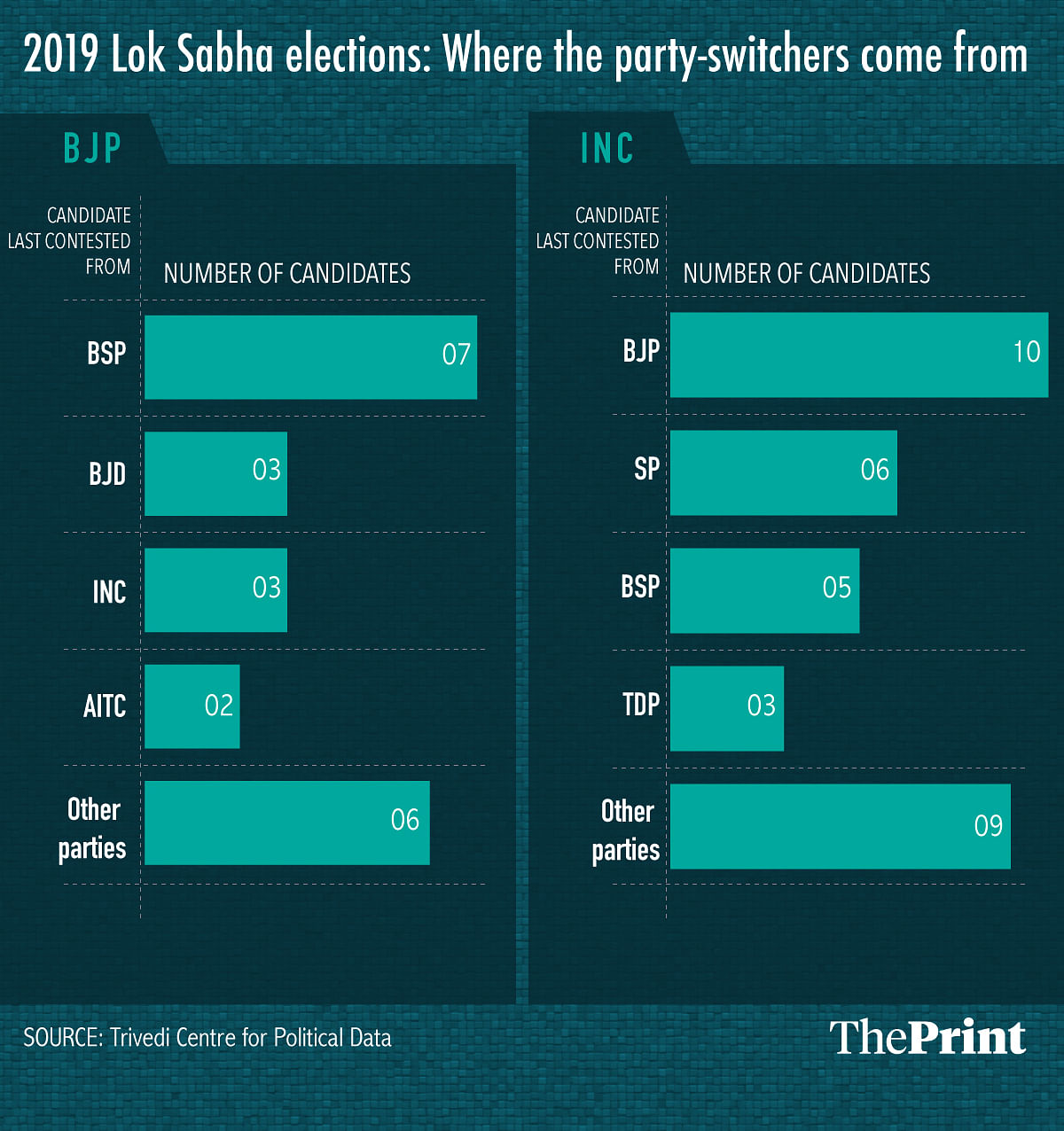
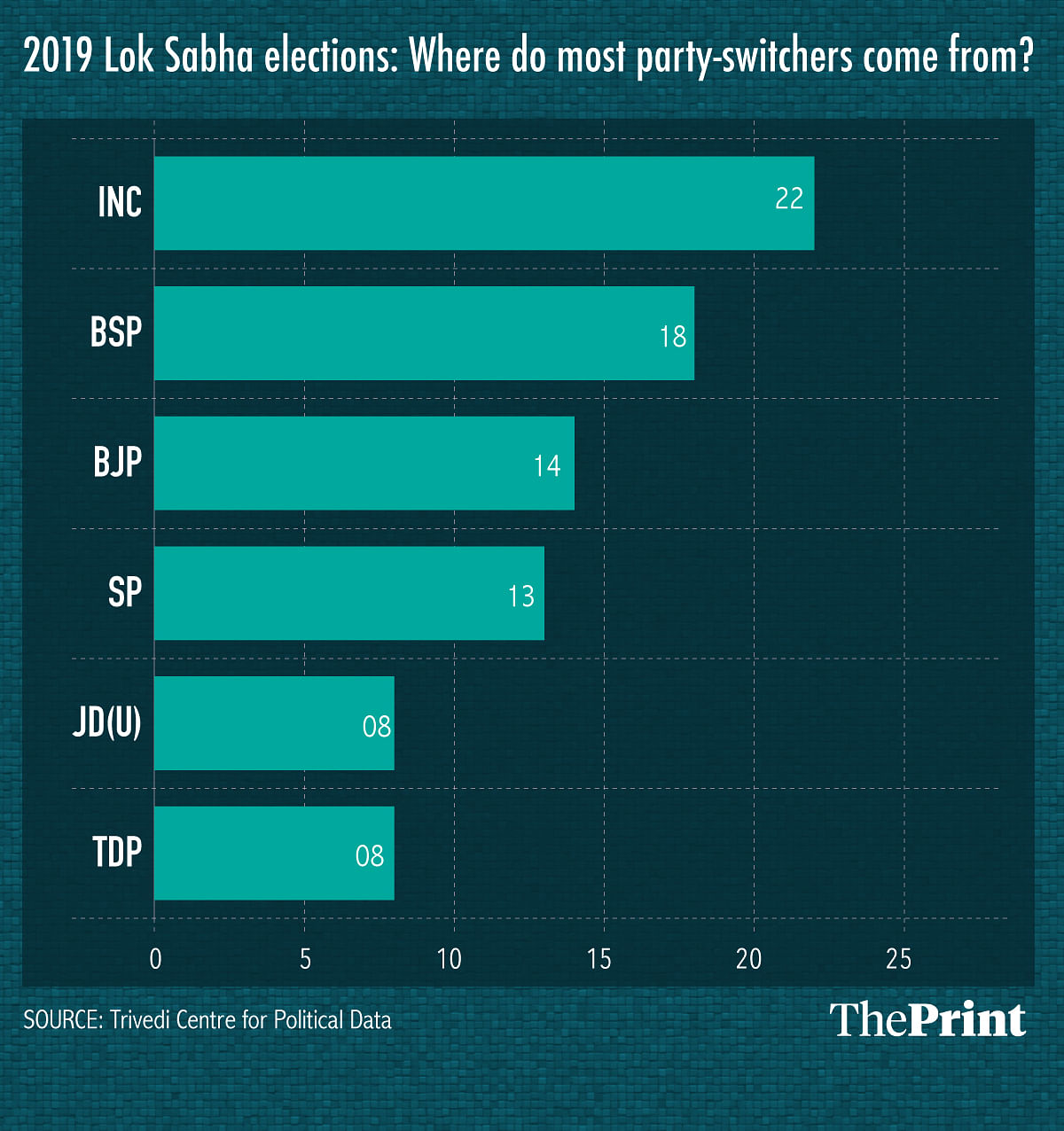
The BJP regularly fields 4-6 per cent party-switchers in the Lok Sabha elections, against the Congress, which usually fields 8 per cent switched candidates, as political scientist Gilles Verniers, co-director of Trivedi Centre for Political Data, Ashoka University found. While Verniers finds party-switchers or turncoats less successful than those who have remained with a party, this analysis finds that if one were to look at national and state-based parties (which account for over 95 per cent of all MPs), the odds of a party-switcher winning are no different from that of a party loyalist. In a system where voters overwhelmingly vote for the party rather than the candidate, party-switching appears unlikely to trouble voters.
Also read: Not BJP, 3 Congress-JD(S) leaders have brought Karnataka govt on the brink of collapse
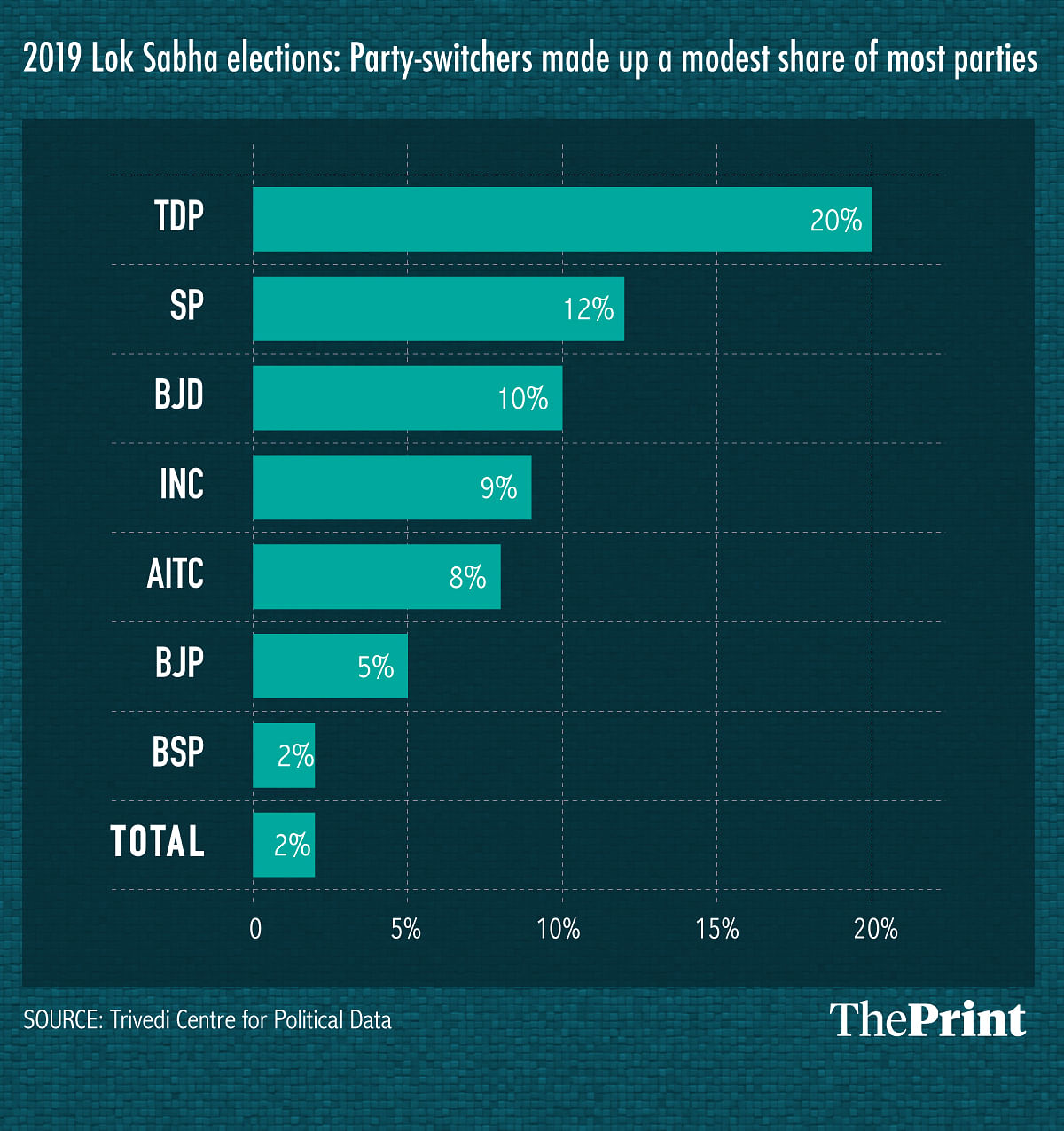
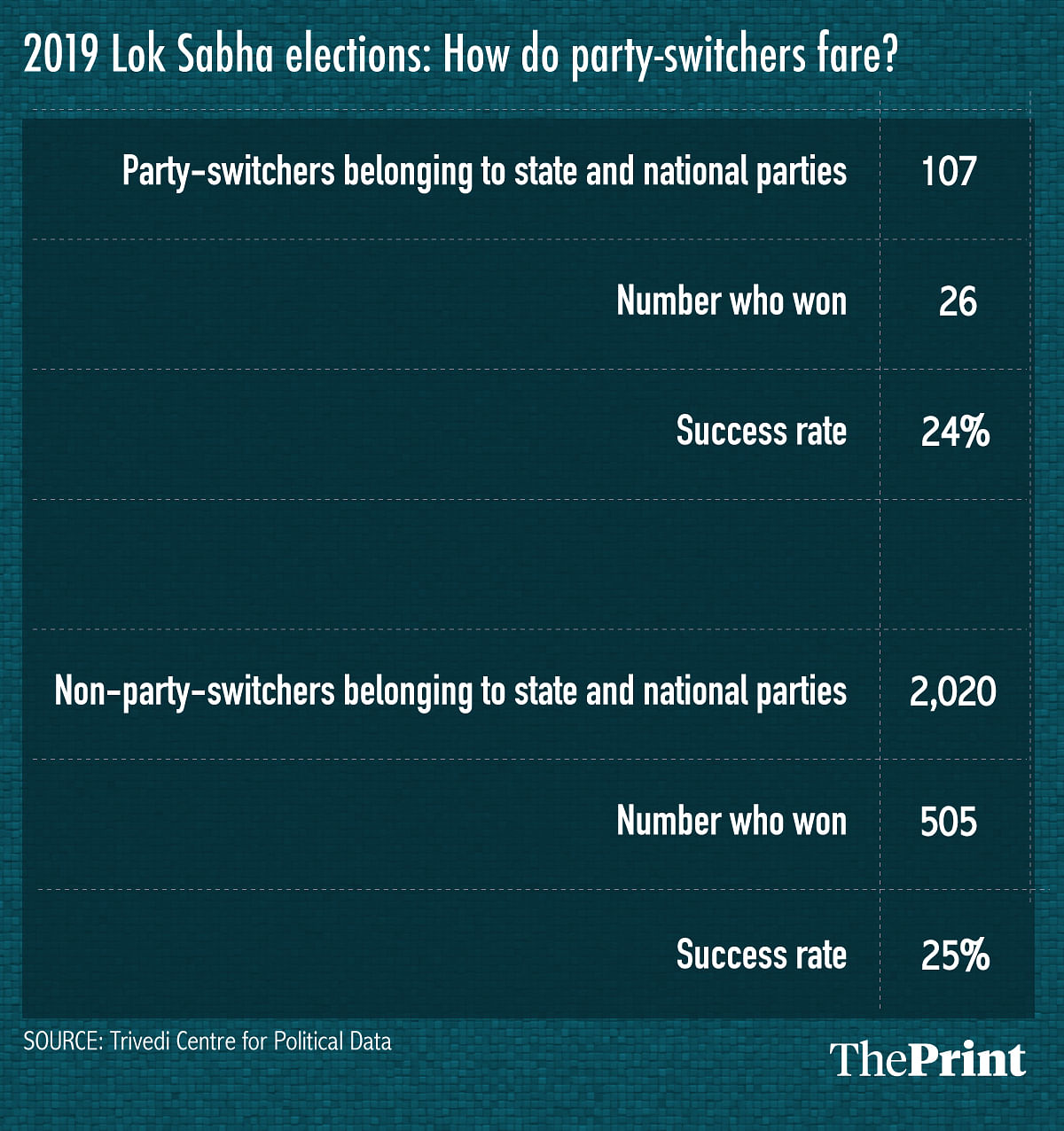
[Note: this analysis is limited in a few respects. The analysis of the 2019 results is derived from the Trivedi Centre for Political Data database of candidates. TCPD considers only those candidates who contested the previous Lok Sabha election on another party’s ticket as party-switchers. So, this excludes MLAs as well as those candidates who held other positions than that of an MP in the party that they left.]
The vast majority of party-switchers in Lok Sabha elections move because they were denied a ticket. But while movement before Lok Sabha elections tend to be of lone or small groups of candidates, states often see mass movements of the sort Karnataka is currently witnessing.
Also read: 3 key takeaways from Karnataka crisis no matter what happens to Kumaraswamy govt
Between 1967 and 1983, there were approximately 2,700 defections at the state level, with 15 defectors becoming chief ministers, according to PRS Legislative Research. After the passage of the Anti-Defection Law in 1985, the pace fell, and defecting across ideological lines became actually quite rare.
Using a dataset of all of India’s assembly elections between 1987 and 2007, political scientists Francesca R. Jensenius (associate professor of Political Science at the University of Oslo) and Pavithra Suryanarayan (assistant professor at Johns Hopkins University’s School of Advanced International Studies) found that of the 16,625constituency-level electoral races covered, 17 per cent involved an MLA running for re-election under another party’s banner. But just 1.2 per cent of BJP MLAs re-ran for the Congress, and just 0.3 per cent of Congress MLAs re-ran for the BJP.
That trend appears to have been overturned with recent developments in Arunachal Pradesh and now, Karnataka and Goa. In 2016, then Arunachal Pradesh Congress CM Pema Khandu defected with 42 MLAs to the People’s Party of Arunachal, which then merged with the BJP. As a result, in the 2019 Arunachal Pradesh assembly elections, nearly a quarter (23 per cent) of all candidates had switched parties since the 2014 state elections. Notably, only one of 42 switches between 2014 and 2019 was to the Congress, while 26 were away from it. In the case of the BJP, the precise reverse was true: 22 moves were towards it, while just one was away from it. These were wise gambles – party-switchers were twice as likely (51 per cent) to win as compared to non-switchers (26 per cent).
Also read: Study shows Indian politicians are spending less and less time in legislative assemblies
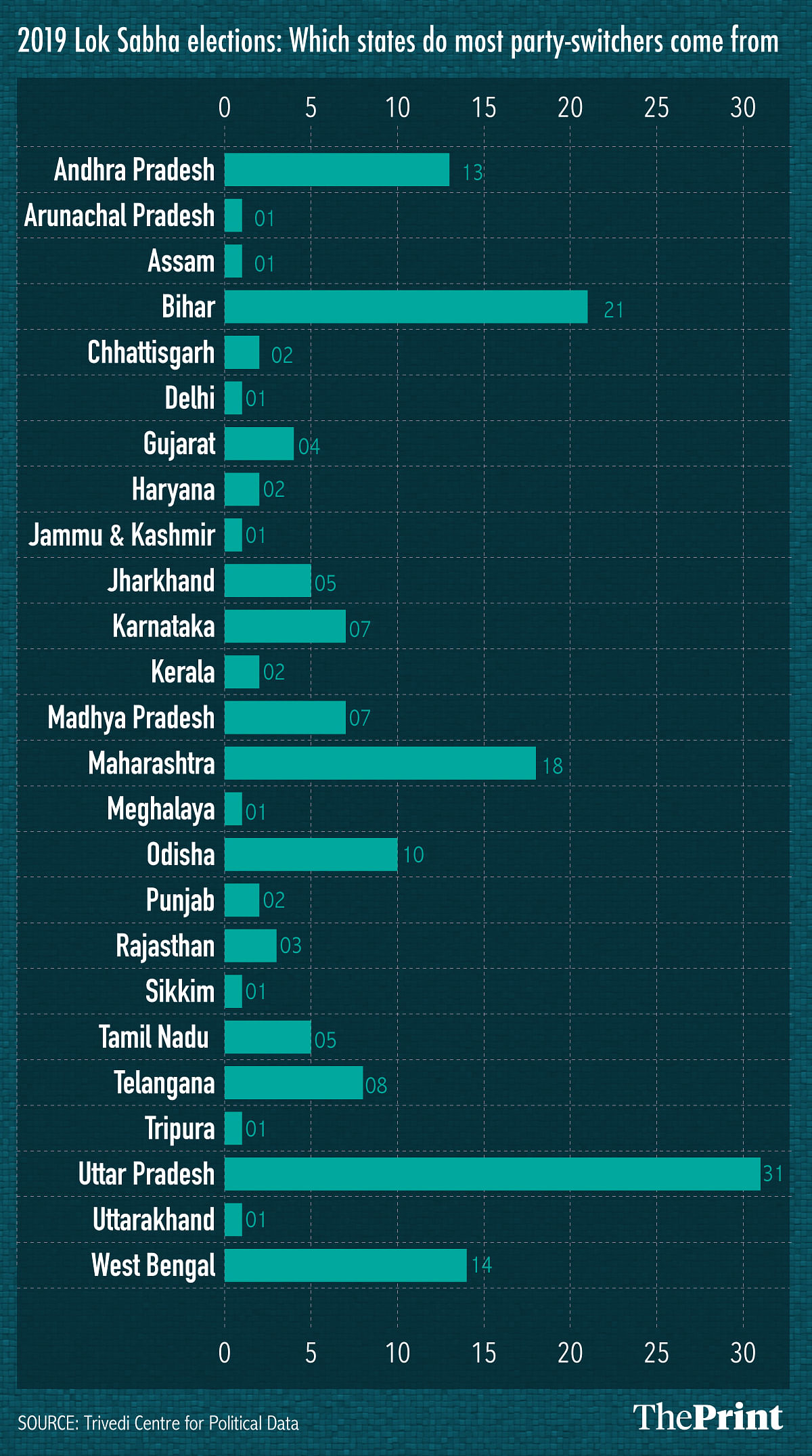
In some states, party-switching comes as a result of a party leader forming a new party, as in the case of the YSR Congress in Andhra Pradesh, the Telangana Rashtra Samithi in Telangana, and the Amma Makkal Munnetra Kazhagam (AMMK) in Tamil Nadu in the recent past. While the Andhra and Telangana defections were more successful, the AMMK experiment failed; the party won no seats in the by-elections necessitated by its defections.
While switching parties just before an election is quite straightforward, mid-term movements – or defections, as in the case of Karnataka and Goa – become more complicated and bring in questions of constitutional law. The Anti-Defection Law allows a party to merge with or into another party provided that at least two-thirds of its legislators are in favour of the merger. In such a case, neither those who leave nor those who remain face disqualification.
The author is a Chennai-based data journalist. Views are personal.


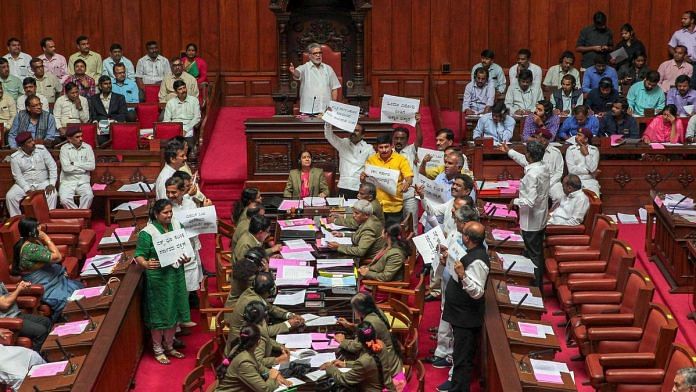

The photo (file image) is of the Karnataka Legislative Council and not Karnataka Assembly (as claimed).
Excellent work. We need much more data before spending out time with analysis. And those who generate the data are have greater credibility.